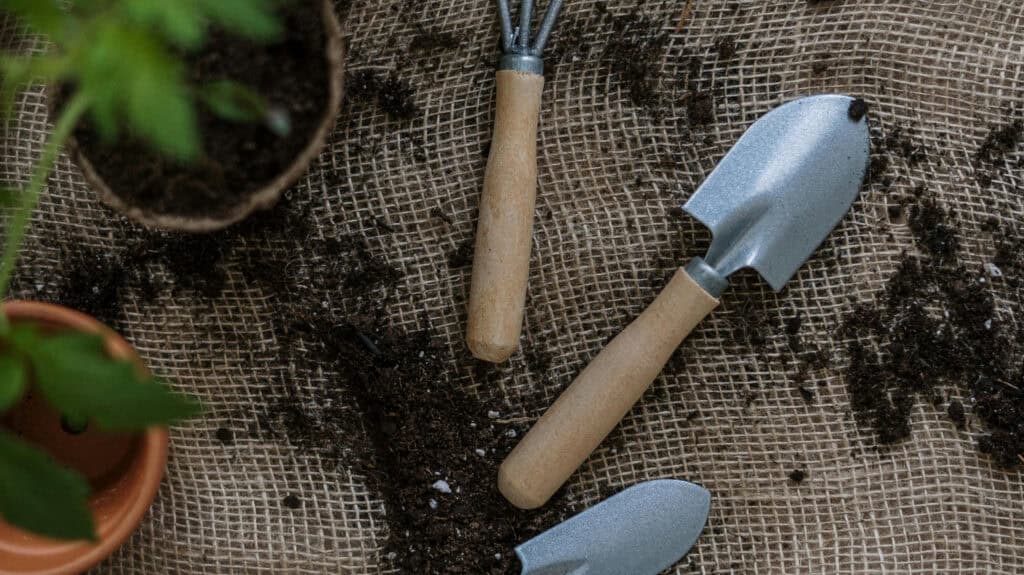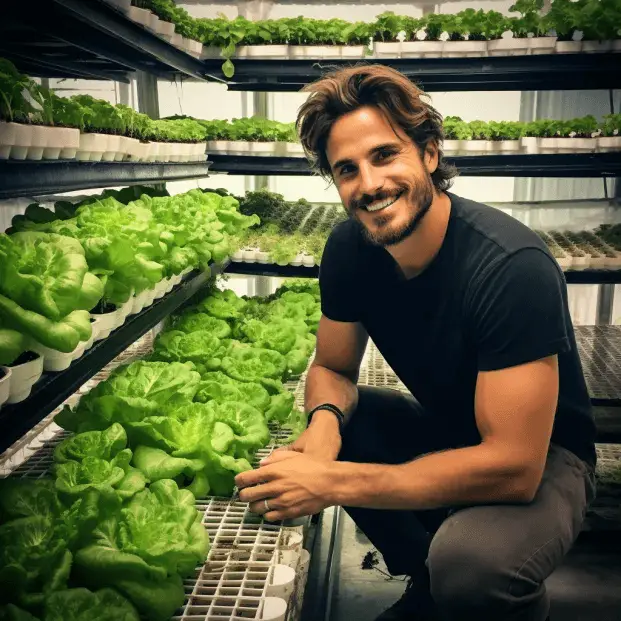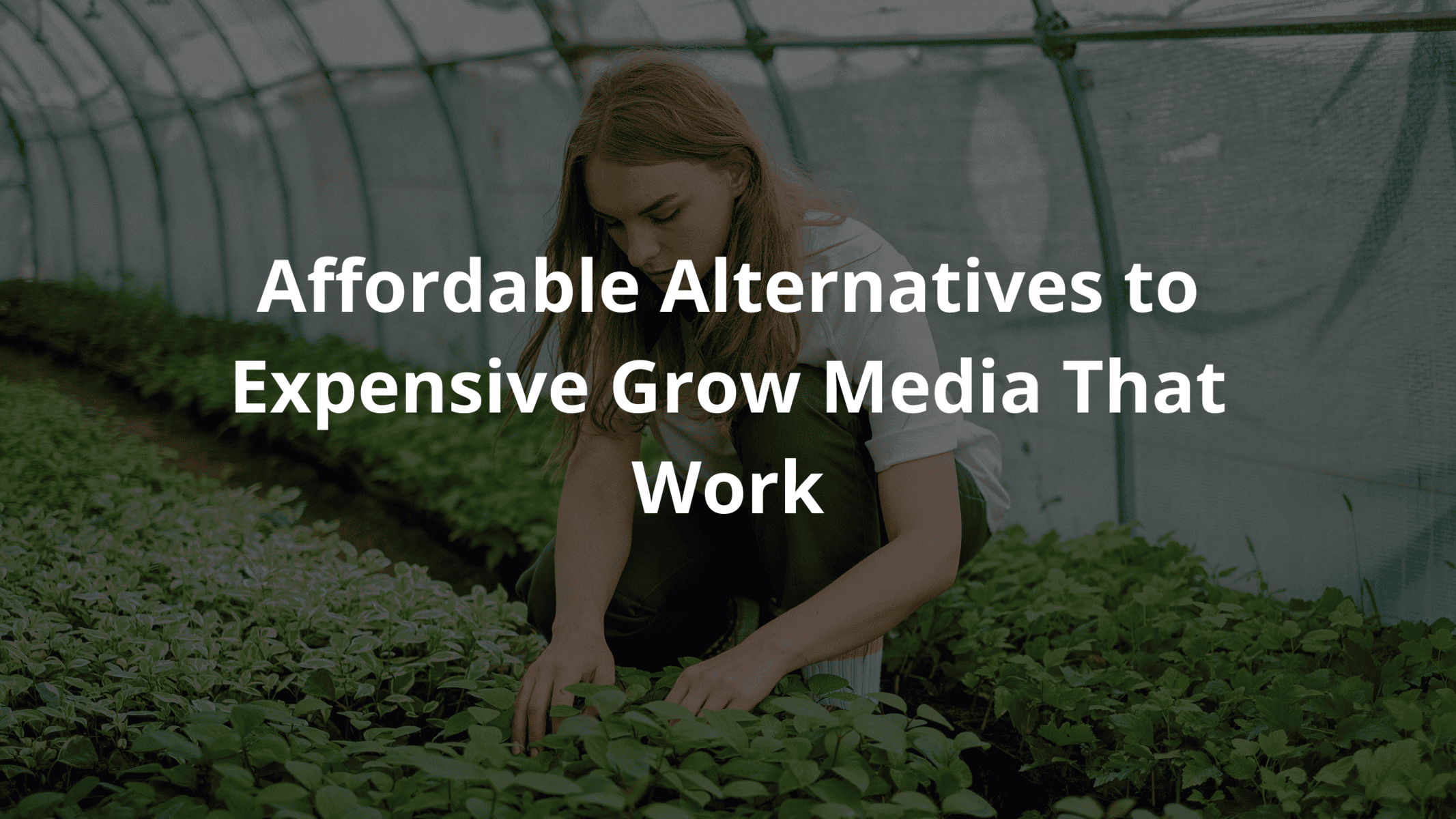The cost of growing media can add up, especially for someone gardening on a budget. Many people spend a lot of money on fancy grow media, which makes one wonder if there are more affordable options out there.
Surprisingly, yes! There are many alternatives that can help grow plants without breaking the bank. Stick around, and here are some of the best options. Maybe someone will find something that works for them!(1)
Key Takeaways
- Many affordable grow media alternatives are available for hydroponic systems.
- Options like coconut coir and perlite work well for moisture retention and drainage.
- Creative solutions, like using rice hulls or pool noodles, can also save you money.
Coconut Coir
Credits: Fast Gardening Michigan
Coconut coir comes from the outer husks of coconuts. It is a good choice instead of peat moss. This material can hold up to 10 times its weight in water. This helps plants stay hydrated longer without needing a lot of water.
Here are some benefits of coconut coir:
- Eco-friendly: Harvesting coconuts does not harm the soil.
- Slightly acidic: This can help some plants grow better.
Using coconut coir in a garden can be very helpful. Many people find that their plants thrive with it. It is surprising how something from coconuts can make such a big difference!
Perlite

Perlite is a type of volcanic rock that expands when heated. It is very light and helps with drainage. This means that when someone waters their plants, the water does not sit in the soil. Sitting water can cause root rot.
Here are some reasons to use perlite:
- Water retention: Perlite can hold three to four times its weight in water.
- Improves aeration: Mixing perlite with other soils helps air reach plant roots.
- Cost-effective: It is inexpensive and can be reused.
Many gardeners mix perlite with other soils to help their plants grow. It is a smart choice for anyone who enjoys gardening.
Vermiculite
Vermiculite is a mineral that expands when heated, just like perlite. It holds moisture very well and can also keep nutrients. This makes it a great choice for starting seeds.
Here are some reasons to use vermiculite:
- Moisture retention: It helps keep seeds hydrated.
- Nutrient retention: Vermiculite holds onto nutrients for plants.
- Moderately priced: It is affordable and can be reused.
Starting tomato seeds in a mixture of vermiculite and coconut coir worked well. They sprouted quickly! If someone is starting seedlings, they should give vermiculite a try.
Expanded Clay Pellets
Expanded clay pellets are small, lightweight balls made from clay. They provide excellent drainage and aeration. These pellets are often used in hydroponic systems.
Here are some benefits of expanded clay pellets:
- Lightweight: They are easy to handle and move.
- Excellent drainage: Water flows well through them, which helps prevent root rot.
- Reusable: They can be used over and over again.
While they might cost a bit more at first, they last a long time. Many gardeners mix them with other growing media, and it seems to work well. If someone wants to try a hydroponic garden, expanded clay pellets might be a good option to consider.
Oasis Cubes
Oasis cubes are made from a special foam that absorbs water very well. They are perfect for starting seeds and are very easy to use. There is no need to soak them before planting!
Here are some great things about oasis cubes:
- Quick sprouting: They help seeds sprout quickly. Many people have used them for herb seeds and seen fast results.
- Inexpensive: They are affordable and easy to find.
- Neutral pH: They will not change the acidity of the soil.
For anyone looking for a low-maintenance option, oasis cubes are definitely worth considering.
Sand
Sand is one of the cheapest materials available. On its own, it does not hold moisture well, but it can be very helpful when mixed with other materials.
Here are some benefits of using sand:
- Improves drainage: Mixing sand with coconut coir or perlite helps water flow better.
- Versatile: It can be used in many different soil mixes.
- Cost-effective: It is easy on the wallet.
Many people have had great results using sand along with coconut coir and perlite. Just keep in mind that sand might need a little extra care to maintain the right moisture levels.
Rice Hulls
Rice hulls are lightweight and come from rice processing. They can help aerate the soil while also retaining some moisture. Many gardeners overlook them, but they are a smart choice for saving money.
Here’s why rice hulls are great:
- Biodegradable: They break down naturally, making them good for the environment.
- Versatile: They can be used alone or mixed with other media. Many people find this helpful.
- Cost-effective: They are often cheaper than other options.
For anyone looking for a handy gardening material, rice hulls are worth trying.
Sawdust
Sawdust can be an affordable option, especially if someone has some at home. However, it’s important to be careful with sawdust. It can compact over time, which affects drainage.
Here are some key points about sawdust:
- Affordable: It is easy to find and often free if it is lying around.
- Mixing required: To use it successfully, it should be mixed with other materials like coconut coir.
- Manageable: With proper attention, sawdust can benefit a garden.
With proper management, sawdust can be a great addition to a garden. Just remember to mix it well to keep the soil healthy.
Leaf Mold
Leaf mold is made from decomposed leaves. It is an organic option that helps improve soil structure and moisture retention. Plus, it is renewable! Anyone can easily make it at home using leaves from their yard.
Here’s why leaf mold is great:
- Improves soil: It enriches garden soil and helps plants grow.
- Moisture retention: It holds water well, keeping plants hydrated.
- Recycles waste: It is a fantastic way to recycle yard waste.
Many gardeners have found that using leaf mold works wonders in their gardens!
Pool Noodles
This idea might sound strange, but some gardeners use cut-up pool noodles as a creative way to support seedlings in hydroponic systems. They are cheap and customizable!(2)
Here are some benefits of using pool noodles:
- Lightweight: They are easy to handle and move around.
- Support: While they do not work like traditional grow media, they help hold up young plants.
- Fun and resourceful: They offer a creative option for those looking to try new ideas.
Many gardeners find it a fun and resourceful way to experiment in their gardening projects.
Expanded Shale
Expanded shale is similar to clay pellets but often comes at a lower price. It is lightweight and helps with drainage.
Here are some reasons to consider expanded shale:
- Good for drainage: It allows water to flow freely, preventing root rot.
- Cost-effective: If found in bulk, it can be a great deal for big gardening projects.
- Mixing option: Many people use it with other materials to create the best growing environment.
Expanded shale can be a smart choice for many gardeners.
Conclusion
There are many affordable alternatives to expensive grow media that can help someone garden on a budget. Options like coconut coir and perlite, along with creative choices like pool noodles, offer a variety of possibilities. Experimenting with these materials can help find what works best for plants while saving money. Gardening can be enjoyable without being costly. Happy planting!
FAQ
What are the environmental impacts of using coco coir as an affordable alternative to expensive grow media?
Coco coir is a great choice for gardening because it helps protect the environment. Unlike peat, which can harm ecosystems when harvested, coconut coir comes from coconut husks, making it a renewable resource. Using coco coir in outdoor gardens and hydroponic systems supports healthy plant growth while being eco-friendly.
How do growth rates compare between animal cells and plant-based alternatives like coconut coir?
Growth rates can vary a lot. Animal cells often need special conditions and growth medium to thrive. In contrast, plant-based options like coconut coir provide the right environment for plants to grow quickly. Using affordable grow media like coco coir can help improve growth in both outdoor gardens and hydroponic setups.
What are the risks of contamination when using different cell types in cell-cultured meat production?
Contamination is a big concern in the meat industry, especially when working with primary cells or cell lines. To reduce the risk of contamination in cultivated meat production, it’s important to use clean techniques and good growing conditions. Affordable alternatives like coconut coir can help create a healthier environment for growing plants and cells.
How do energy prices affect the cost of growth media for hydroponic production?
Energy prices can have a big impact on how much growth media costs. When energy prices go up, the cost of materials can also increase. However, using affordable options like coconut coir can help keep costs down while still providing good support for plant growth in hydroponic systems.
What is Doyne Farmer’s perspective on advancing solutions for alternative proteins in the meat industry?
Doyne Farmer believes that finding new ways to produce alternative proteins is very important. He suggests focusing on renewable energy sources and using affordable materials like coconut coir to make production more efficient and less expensive. This approach can help make sustainable food options more available to everyone.
References
- https://hydroponicway.com/7-low-cost-alternatives-to-rockwool-bbf49e937507/
- https://haje.medium.com/diy-hydroponics-on-the-cheap-43e2e0fd258b
Related Articles
- https://tophydroponicgarden.com/indoor-hydroponic-kits/
- https://tophydroponicgarden.com/how-much-does-an-aeroponic-system-cost/
- https://tophydroponicgarden.com/grow-lights/
Was this helpful?

I’m Barrie L., a passionate hydroponic gardening enthusiast dedicated to cultivating thriving, soil-less gardens. With a focus on all things hydroponic, I share my expertise on innovative growing techniques and sustainable practices through my blog, tophydroponicgarden.com. As a seasoned hydroponics specialist, my goal is to inspire and guide fellow gardeners in harnessing the power of water-based cultivation for bountiful and eco-friendly harvests. I’m also an author of the book “Hydroponics For Absolute Beginners: Your Step By Step Guide For How To Create An Hydroponics System At Home Without Soil, For Growing Vegetable, Fruit And Herbs.” which is sold on Amazon. Join me on a journey of redefining the way we cultivate plants, one nutrient-rich solution at a time. Happy growing!


